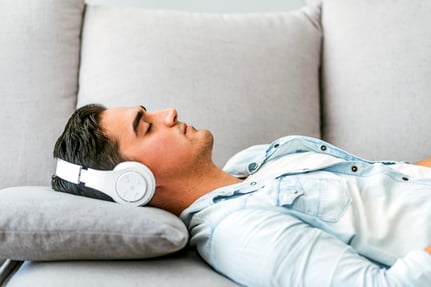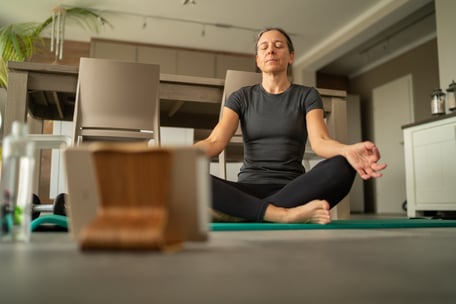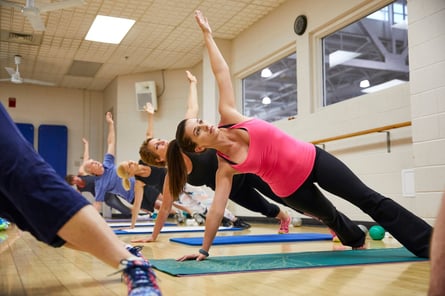 Personal trainers are people, too (well, at least when no one is looking!). In reality, there are a lot of new bridges we, as a society, are crossing every single day. As a trainer, my goal is to put all my effort into making sure that my clients are being healthy with fitness and wellness as a priority. With the lockdown upon us, finding new ways to get this job done is a challenge, but so is making sure that you are finding time for yourself.
Personal trainers are people, too (well, at least when no one is looking!). In reality, there are a lot of new bridges we, as a society, are crossing every single day. As a trainer, my goal is to put all my effort into making sure that my clients are being healthy with fitness and wellness as a priority. With the lockdown upon us, finding new ways to get this job done is a challenge, but so is making sure that you are finding time for yourself.
As I stated in part 1, we are looking to “fill our cup” every day so that we can be the best version of ourselves that we can be. This in turn helps ensure that we can fulfill our daily agendas. We already touched on two aspects of self-care, home setup and sleep. Here I conclude our discussion with positive self-gratitude practices and meditation (and breathing).
Practice Self-Gratitude
It may take some time to get used to a self-gratitude–oriented mindset. The focus is on you! In our “normal” lives, we have careers that put us in positions where we must not only focus on work tasks, but also on putting your personal priorities on the back burner to serve others. The same can be said about people who take care of loved ones and raise children. Taking time for yourself is easier said than done, but at the end of the day, are you finding ways to refill your cup?
Lorea Martinez, PhD, a Social Emotional Learning practitioner, states, “Gratitude helps us cope better with stress, recover more quickly from illness, and enjoy more robust physical health, including lower blood pressure and better immune function. Gratitude is the quality of being thankful, the readiness to show appreciation and return kindness to others.” She gives these helpful tips on ways you can find the benefits of self-gratitude.
- Identify three things that you value about yourself.
- Acknowledge three things that went well each day.
- Take a moment to appreciate these things.
- Repeat!
Try Meditation
Another great way to cope is through meditation. For a beginner, meditation can be as simple as practicing calm, deep-breathing techniques. Your meditation can be many things, but it should definitely not be troublesome or a burden. Finding quiet and peace for even a few minutes per day is a great way to not only fill your cup, but also introduce a healthful practice into your day. NIFS blogger Amanda Licatatiso wrote about the benefits of mediation and some great practice tips. Check out her blog to see how adding a few minutes of meditation a day can impact your self-care plan.
Soon we will all start working toward going back to more normal routines, but until then, please make sure you are taking time for yourself. Remember, we need to take care of ourselves, so that we can take care of others (and our jobs). We are eager to see you again and help you reach your fitness goals. Until next time, muscleheads rejoice and evolve.
This blog was written by Thomas Livengood, NIFS Health Fitness Instructor and Personal Trainer. To learn more about the NIFS bloggers, click here.


 Take these next few weeks or so and use them to your advantage. We know this is an extremely challenging time, and we want to make sure you feel like you are taken care of. Circumstances are tricky right now, so even if you adopt one new technique, consider that a win! Don’t expect yourself to “eat the rainbow” every day, feel like you fall asleep easily at night from a relaxing day working at home in your pajamas, or get in a 10-mile run each morning. While you shelter at home and stay healthy, keep these tips in mind.
Take these next few weeks or so and use them to your advantage. We know this is an extremely challenging time, and we want to make sure you feel like you are taken care of. Circumstances are tricky right now, so even if you adopt one new technique, consider that a win! Don’t expect yourself to “eat the rainbow” every day, feel like you fall asleep easily at night from a relaxing day working at home in your pajamas, or get in a 10-mile run each morning. While you shelter at home and stay healthy, keep these tips in mind. Yoga is pretty popular, and not just in the fitness industry. It’s getting lots of press for its ability to aid in living a generally healthy lifestyle. When people hear about healthy living, they often associate that only with exercise, and sometimes neglect the importance of a balanced diet and de-stressing techniques. Studies are now showing that it’s important to balance out all areas of life; not just one part should have dominance.
Yoga is pretty popular, and not just in the fitness industry. It’s getting lots of press for its ability to aid in living a generally healthy lifestyle. When people hear about healthy living, they often associate that only with exercise, and sometimes neglect the importance of a balanced diet and de-stressing techniques. Studies are now showing that it’s important to balance out all areas of life; not just one part should have dominance.